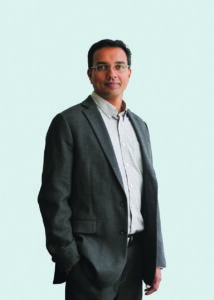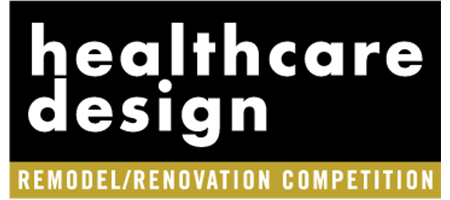Healthcare Design’s Take 5 blog series regularly invites healthcare design professionals to share the top five ideas on their minds. Looking back on this year’s contributed articles, technology, social determinants of health, flexible design strategies, and sustainability were among the dominant discussions this year.
Read on for more of what was on the industry’s radar in 2024.
Holistic master planning

Dawne David-Pierre (Headshot credit: Perkins&Will)
The design of healthcare spaces has the power to impact patient and family experiences in profound ways at times when they are at their most vulnerable. Populations that are most at-risk for health disparities—racial and ethnic minority groups, socioeconomically burdened communities, and the elderly—are also often served by under-resourced health systems with overburdened infrastructure that requires upgrades to meet current and emerging standards.
Healthcare designers can work with healthcare systems to identify strategic goals for holistic master planning that respects patient populations, service lines, provider support, and facility maintenance. By prioritizing and sequencing improvements to aging facilities, project teams can maximize impact, while mitigating disruption to capacity and minimizing waste. Establishing a road map that considers this broader context helps architects to be better stewards of clients’ resources. This strategy applies whether planning large-scale, phased in-place renovations or delivering cohesive design 5,000 square feet at a time.–Dawne David-Pierre, director of operations, Perkins&Will
Read more here.
Healthcare command hubs

Gokul Natarajan (Headshot credit: Page Southerland Page)
The future of healthcare involves decentralization, with some services, such as home sleep tests, heart monitoring, and smartphone-based ear infection detection, shifting to remote options.
As remote options become increasingly prevalent, healthcare facilities must establish command hubs. These hubs are centralized platforms to gather and manage the data required for effective remote monitoring and consultation.
The growth of these command hubs emphasizes continuous monitoring of human lives for health, wellness, outcomes, predictive risk, and early diagnostic warning signs. Additionally, hospitals will be set up specifically for telemedicine, virtual consultation, and remote monitoring.
To gather this data and provide continuous monitoring, healthcare facilities will need command hubs capable of tracking patients in a hospital or multi-hospital system, those cared for at home, and patients with wearable devices that track in real-time.
These hubs can be part of a healthcare facility or be centrally located in a multi-hospital system.–Gokul Natarajan, principal, project director, Page
Read more here.
Automated efficiency

Brett Paloutzian (Headshot credit: HED)
Hospitals are already harnessing the power of virtual embedded mesh networks to optimize lighting, HVAC systems, and overall energy consumption.
The technology automatically adjusts lighting or air conditioning depending on occupancy within a room. These mesh networks can be built into a more sophisticated electrical design, lighting design, and engineering systems and expanded to track patient occupancy and map the movement of staff, patients, and equipment throughout the facility using Internet of Things, radio frequency identification (RFID), facial recognition, and sensors.
This would make the building into an information gathering tool, using AI to visualize building use data in a way that executives can use to make operational changes to improve efficiency within the business. For instance, real-time data can alert hospital leadership to unusually long procedures or prompt adjustments for increased or prolonged patient stays, ensuring a more efficient and responsive healthcare environment.–Brett Paloutzian, national healthcare business leader, HED
Read more here.
Expanding flexible room capacity

Carly Morris (Headshot credit: Swinerton)
The buzz among healthcare experts is about the value of flexible and universal hospital rooms to maximize available space. However, as healthcare systems struggle financially, the trend is taking another turn.
Many hospitals are also recapturing space by moving services that do not require a 24-hour stay, such as imaging centers, ophthalmology, and elective surgeries, to off-campus locations, some to suburban areas where real estate costs may be less.
Outfitting this now-available space with adaptive, universal rooms can offer cost efficiencies for health systems, who can buy in-bulk raw building materials (including flooring and wall protection), prefabricated headwalls, bathroom pods, and furniture and deploy the same layout from room to room.–Carly Morris, healthcare market lead, Swinerton
Read more here.
Prioritizing no-harm materials

Duncan Griffin (Headshot credit: Photo courtesy of HDR © 2022 Olli Tumelius for Rouse Photography)
The building materials in a healthcare facility can have a profound impact on occupant well-being, and much attention is being paid to healthy material selection during the design process to safeguard both patients and employees.
Care providers, for example, have above-average rates of adult-onset asthma in part due to chemicals present in healthcare settings, as well as disinfectants and sterilants used to clean interiors.
Designers can do their part by specifying materials that disclose ingredients in their products and do not negatively impact environmental and human health.
Another example is choosing materials that create an optimal environment for how the healthcare facility is used. For example, non-slip floors can reduce stress on employees who are on foot for hours at a time.
Materials that foster a quieter environment can also ease stress of employees and patients, like the rubber flooring in the neonatal intensive care unit at Benioff Oakland Children’s Hospital in Oakland, Calif. It creates a quieter, more comfortable, cleanable environment that’s absent of toxic products and helps reduce the physical stress of care providers who are on their feet for long shifts.–Duncan Griffin, director of sustainability, health, HDR
Read more here.
Speed-to-market pressures and collaborative ingenuity

Angel Colon (Headshot credit: Robins & Morton)
The number one challenge facing the healthcare design industry is improving speed to market for healthcare projects.
Demand remains high for new and upgraded healthcare facilities as the sector exhibits strong near-term growth and competition among health systems remains fierce. There’s no easy way to further consolidate an already time-crunched multiphase process that requires planning, funding, design, permitting, and construction.
Fortunately, an emphasis on the early integration of project delivery teams is proving its power to streamline. This includes enabling designers, construction partners, owners, trade contractors, and specialty consultants to share and apply their diverse knowledge.
The greatest opportunity to impact efficiency, speed, and value is during the earliest stages of a hospital project when we can identify constructability or materiality issues before beginning work. Today’s creative collaborations show us the way forward, whether the solutions developed together lead to more precise prefabrication, supply chain mastery, overlapped building phases, adaptive designs, data ingenuity, or sustainability breakthroughs.–Angel Colon, operations manager, Robins & Morton
Read more here.
Want to share your Top 5? Contact Managing Editor Tracey Walker at [email protected] for submission instructions.











